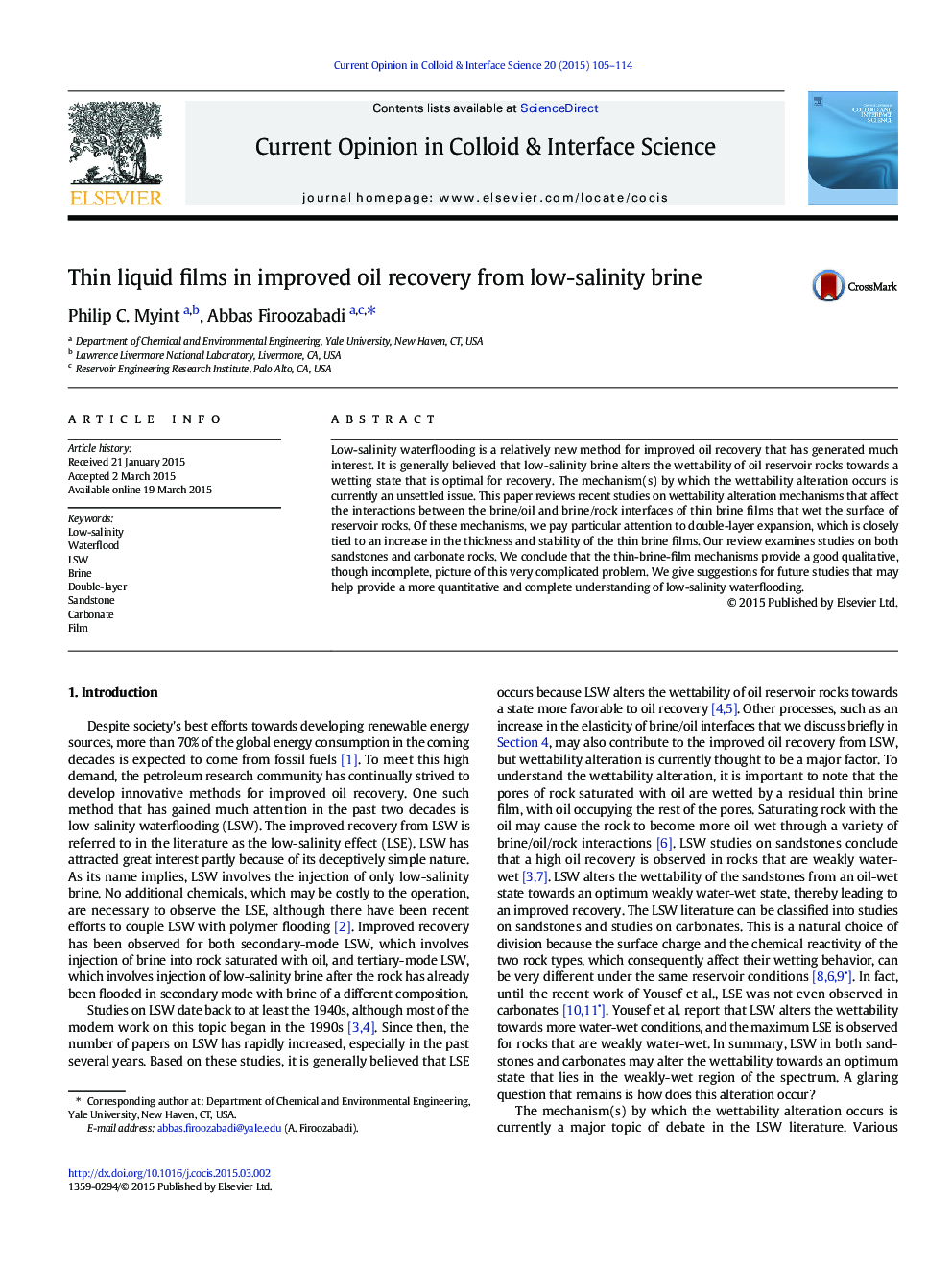| Article ID | Journal | Published Year | Pages | File Type |
|---|---|---|---|---|
| 603263 | Current Opinion in Colloid & Interface Science | 2015 | 10 Pages |
Low-salinity waterflooding is a relatively new method for improved oil recovery that has generated much interest. It is generally believed that low-salinity brine alters the wettability of oil reservoir rocks towards a wetting state that is optimal for recovery. The mechanism(s) by which the wettability alteration occurs is currently an unsettled issue. This paper reviews recent studies on wettability alteration mechanisms that affect the interactions between the brine/oil and brine/rock interfaces of thin brine films that wet the surface of reservoir rocks. Of these mechanisms, we pay particular attention to double-layer expansion, which is closely tied to an increase in the thickness and stability of the thin brine films. Our review examines studies on both sandstones and carbonate rocks. We conclude that the thin-brine-film mechanisms provide a good qualitative, though incomplete, picture of this very complicated problem. We give suggestions for future studies that may help provide a more quantitative and complete understanding of low-salinity waterflooding.
Graphical abstractFigure optionsDownload full-size imageDownload high-quality image (180 K)Download as PowerPoint slide
